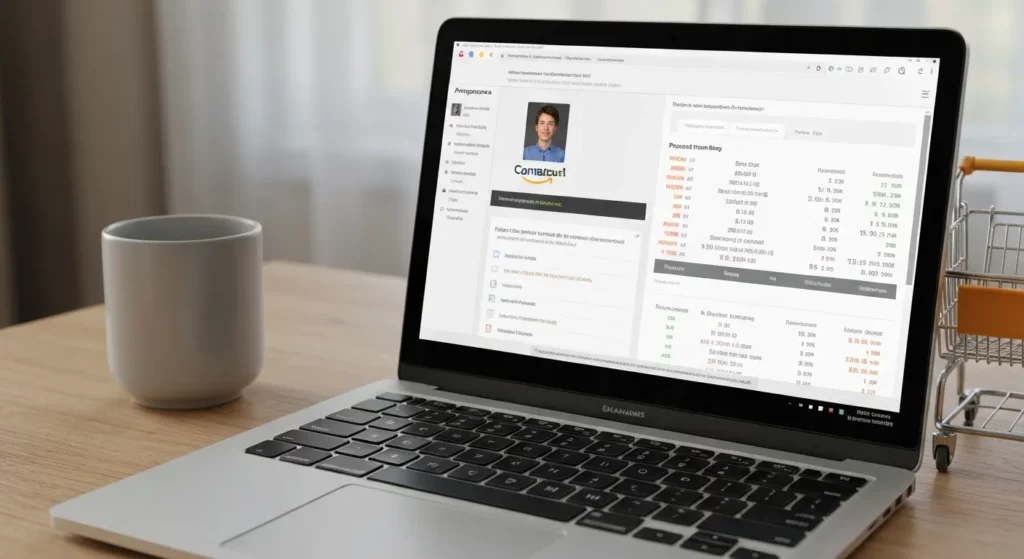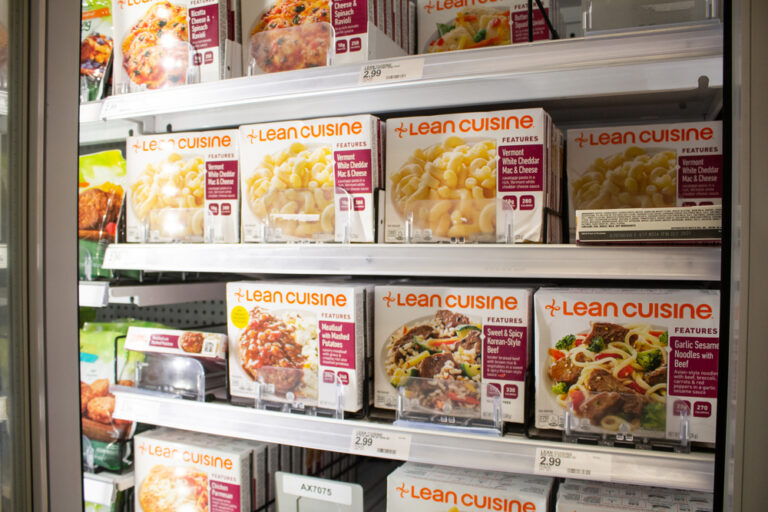How many of you love online shopping?
In today’s hyper-connected world, we are incredibly lucky to have the particular convenience of shopping online. It has fundamentally transformed the way we acquire goods and services, evolving from a niche activity into a global retail powerhouse. It’s never been easier! Just a few clicks on a laptop or taps on a smartphone screen separate you from your favorite products. With this remarkable ease, you can effortlessly buy anything you want or need: weekly groceries delivered to your door, the latest fashion trends, streaming movies for a cozy night in, airline tickets for your next vacation, bulky furniture, and an endless list of other items. However, while the process is undeniably easy and often quite enjoyable, this digital marketplace is not without its flaws. The very convenience that makes it so attractive can sometimes mask several significant drawbacks.
So, what’s the best option for the modern consumer: embracing the world of online shopping because it’s incredibly convenient and you can do it from the comfort of your home, or making the trip to the nearest store for a more traditional, tangible experience? Is the efficiency of a digital cart superior to the satisfaction of a physical one? No more chitchat; let’s get to the point and see what the major pros and cons of online shopping truly are. After carefully reading and considering them, you can decide what balance of online and in-person shopping is best for you!

1. Convenience
The first and foremost, undeniable benefit of online shopping is its unparalleled convenience. Online retailers are open 24/7, 365 days a year, unlike physical stores that have set business hours and are often closed on holidays. If you ever feel the urge to make a spontaneous purchase at midnight, remember you need to order a gift, or realize you’re out of coffee filters at 5 a.m., there’s no need to wait or hope a 24-hour store is nearby. You simply go to your favorite store’s website, select the items you want, add them to your cart, complete the checkout in seconds, and you’re good to go. This freedom saves an incredible amount of time and energy that would otherwise be spent commuting, searching for items in a large store, and waiting in long checkout lines. For many, the next day, you’ll probably have the products in your hands. Yupee!
2. Platform diversity
Another huge benefit of this type of shopping is its incredible versatility. You can do it anywhere, from any connected device—your phone while on the bus, your tablet from the couch, or your work PC during a lunch break. Online shopping flourishes in a variety of digital markets, from massive e-commerce websites like Amazon or eBay to dedicated brand sites, specialized niche boutiques, and even mobile applications, each offering a range of unique experiences. Social media platforms like Instagram and Facebook have also become powerful shopping hubs. In the past years, almost every store’s app has become better and better, with most of them being exceptionally user-friendly, offering features like saved payment information and personalized recommendations to make the process even smoother.
3. You can compare the prices easily
When you go to a physical store, the sheer volume of products can be overwhelming, and the layout is often designed to encourage impulse buys. You see so many items that are tempting to buy, and before you know it, your cart is full of things you didn’t plan on purchasing. At least, this is my case. Now, when you opt for online shopping, you gain the power to easily and systematically compare the prices of thousands of items available across multiple retailers. You can open several tabs in your browser to view the same product on different websites, allowing you to find the absolute best price in just a few minutes.
The good thing is that if you don’t have the necessary patience to do this manual comparison on your own, you can download various grocery store price comparison mobile apps or browser extensions to help you get the best bargain on the market automatically. These tools can even search for coupon codes and apply them at checkout, maximizing your savings with minimal effort.
4. Affordable prices
…And free shipping in some cases too! Now, that’s one of the major perks of online shopping that directly impacts your wallet. Retailers who exclusively do business online are not required to own or lease expensive physical storefronts in prime locations. That’s why they usually have fewer operational expenses—no high rent, lower utility bills, and reduced staffing costs. These significant savings are often passed along to the client by simply lowering the prices of their products, making online deals hard to beat.
But wait, there’s more! The savings don’t stop at the initial price tag. If you’re a loyal customer, you might unlock additional benefits. Cashback offers, tiered loyalty programs with exclusive perks, digital coupons, and regular flash discounts are some of the common things that online retailers give as rewards for their customers’ repeat business. You can also subscribe to their newsletters to be the first to know about upcoming promotions and to be up-to-date on when a certain item is on sale, ensuring you never miss a great deal.
5. Private shopping time
For certain purchases, privacy is paramount, and the best method to quietly order anything you need is to do so online. Whether you’re buying personal care items, lingerie, specific health products, or a surprise gift for a loved one, the digital storefront offers a discreet and judgment-free experience. Nobody needs to see what you’re putting in your virtual basket, and you can avoid any potential awkwardness at a physical checkout counter. Furthermore, many retailers even provide discrete packaging that makes your delivery person—and any curious neighbors—wonder what you’re packing. The plain brown box has become a symbol of shopping privacy.
Do you want to be updated on where your order is from the moment it has been shipped until it gets to your door? Well, checking your phone may be daunting, but what if you have a watch that could show you all your emails in one touch? This Amazon Band 5 Activity Fitness Tracker with Alexa built-in was my latest Amazon acquisition.
Buying it was a very good idea because I could view everything on it: from my shopping list to my email and other important things I needed to remember. It keeps me notified of delivery updates without having to constantly pull out my phone. Compatible with Android 5.0 or iOS 10.0 and above, this fitness bracelet costs only $28.78.
6. Online shopping? Zero parking struggles
Let’s be honest: one of the main reasons you might skip a trip to a business is the hassle of finding a parking space. This is especially true in busy urban centers or during peak shopping seasons. Online shopping has the significant advantage of being completely free of congestion, traffic jams, and parking nightmares, especially during the holidays. You avoid the stress of circling a packed parking lot, the frustration of finding the only available spot a half-mile from the entrance, and the potential cost of paid parking. When it’s really busy, you may not even be able to recall where you parked your car! Shopping online eliminates this entire layer of stress from the experience.
7. More variety of products
The selection of options available on the internet is absolutely incredible and virtually limitless. In the online world, you can locate nearly any brand, product, size, or color you’re searching for. You don’t have to pay for expensive travel to follow the newest global trends or access niche products. Rather than being restricted to the inventory of your local area, you can purchase from stores located in different regions of the state, nation, or even the globe. This opens up a world of possibilities. You have access to a significantly wider variety of hues and sizes than you could ever find in local stores, which are constrained by physical shelf space. This “endless aisle” effect means you’re more likely to find exactly what you want, not just settle for what’s available.
8. More payment methods
Another huge benefit of online shopping is the sheer variety and flexibility of payment methods. Most online retailers offer a broad spectrum of options to cater to every customer’s preference. You can either pay by traditional credit or debit card, use digital wallets like PayPal, Apple Pay, or Google Pay for added security, transfer funds via services like Revolut, use cryptocurrency like Bitcoin in some cases, or even choose “buy now, pay later” services to spread out the cost. Many stores still offer the option to pay with cash on delivery when the package arrives at your door. This diversity of choice makes the checkout process more inclusive and convenient for everyone. Whatever works for you!

Some of the cons of online shopping are:
-
Shipping issues
While receiving a package is exciting, the journey from the warehouse to your door can be fraught with problems. If you aren’t the one physically picking an item off the shelf, there’s a greater chance that your shipment will arrive damaged, damp from being left in the rain, melted in the summer heat, or in some frustrating cases, not at all. Packages can get lost in transit or delivered to the wrong address. If shipments do arrive, they can remain outdoors on a porch for a long enough period to be stolen by “porch pirates,” a growing concern for many shoppers. Furthermore, shipping isn’t always free, and unexpected high shipping costs can quickly erase any deal you thought you were getting.
The store usually sends you an email with shipping details and tracking information, so you may want to try to be home when the package arrives or have it delivered to a secure location like your office or a designated pickup locker. Vigilance is often required.
-
Returns can be tricky
The flip side of easy purchasing is often a complicated return process. While some vendors make the procedure simple and customer-friendly, several make it very difficult for you to return their goods or receive a timely refund. You may have to deal with short return windows, the requirement to have all original packaging, the hassle of printing a return label without a printer, and the chore of packaging the item and finding a specific drop-off location. You frequently won’t be compensated for any return shipping expenses, meaning you lose money on a product you don’t even keep.
This is a major area where physical retail wins. Purchasing in person will save you the trouble of labeling, shipping, tracking, and filling out all the necessary paperwork. Plus, you get your refund or exchange on the spot. Since you’ll be able to choose your products carefully in the first place, this means fewer returns are needed overall.
-
You can’t inspect the products you buy
This is probably the single major downside of online shopping: the fact that you are not able to physically touch, see, or try the material or the quality of the product you are buying. You are relying entirely on photos, videos, and descriptions provided by the seller, which can sometimes be inaccurate or misleading. Colors can appear different on-screen, and the quality of a material is impossible to judge through a picture.
Online orders may arrive larger or smaller than described in the photographs, or the product’s measurements may not have been entered accurately. When purchasing clothing online, you cannot feel the texture of the fabric, examine the quality of the stitching, see how the garment fits around your waist, or learn about the manufacturing process. The same applies to furniture’s sturdiness or an electronic’s build quality. Because of this inherent uncertainty, it’s always a good idea to thoroughly read the return policy before you order from them, just in case the item that arrives doesn’t meet your expectations.
-
There may be a delay in the sales assistance
When you’re in a physical store with a question, you can get immediate help. You can just stroll up to a staff member and ask questions about what you’re about to buy. In the online world, getting that same level of support can be a challenge. You cannot just get instant, nuanced advice. Alternatively, you might have to fill out a contact form and wait a whole day or more to receive an email response to your questions, and that delay might be very annoying, especially if your question is time-sensitive.
Nonetheless, things are starting to get better because a lot of websites now offer an automated chat feature or screen that responds to frequently asked questions instantly. However, these chatbots often struggle with more complex or specific inquiries, leading to a frustrating loop of automated responses. The lack of a quick, helpful human touch remains a significant drawback for many online shoppers.
So, what do you prefer: the 24/7 convenience of online shopping or the tangible, immediate experience of in-store shopping? Perhaps the best approach is a hybrid of the two. Tell us in the comments.
Are you interested in more shopping hacks to become a smarter consumer? You’re definitely in the right place! Here, The Price Makers team does everything in their power to keep you updated with actionable tips and tricks, from how to find the best deals to avoiding the common pitfalls of online retail.
If you like our content and want to save more money, you can also subscribe to our weekly newsletter too! Before you leave, make sure to check out another article that talks about bargains: Comparison Shopping: 8 Best Tips on How to Get Great Deals.














